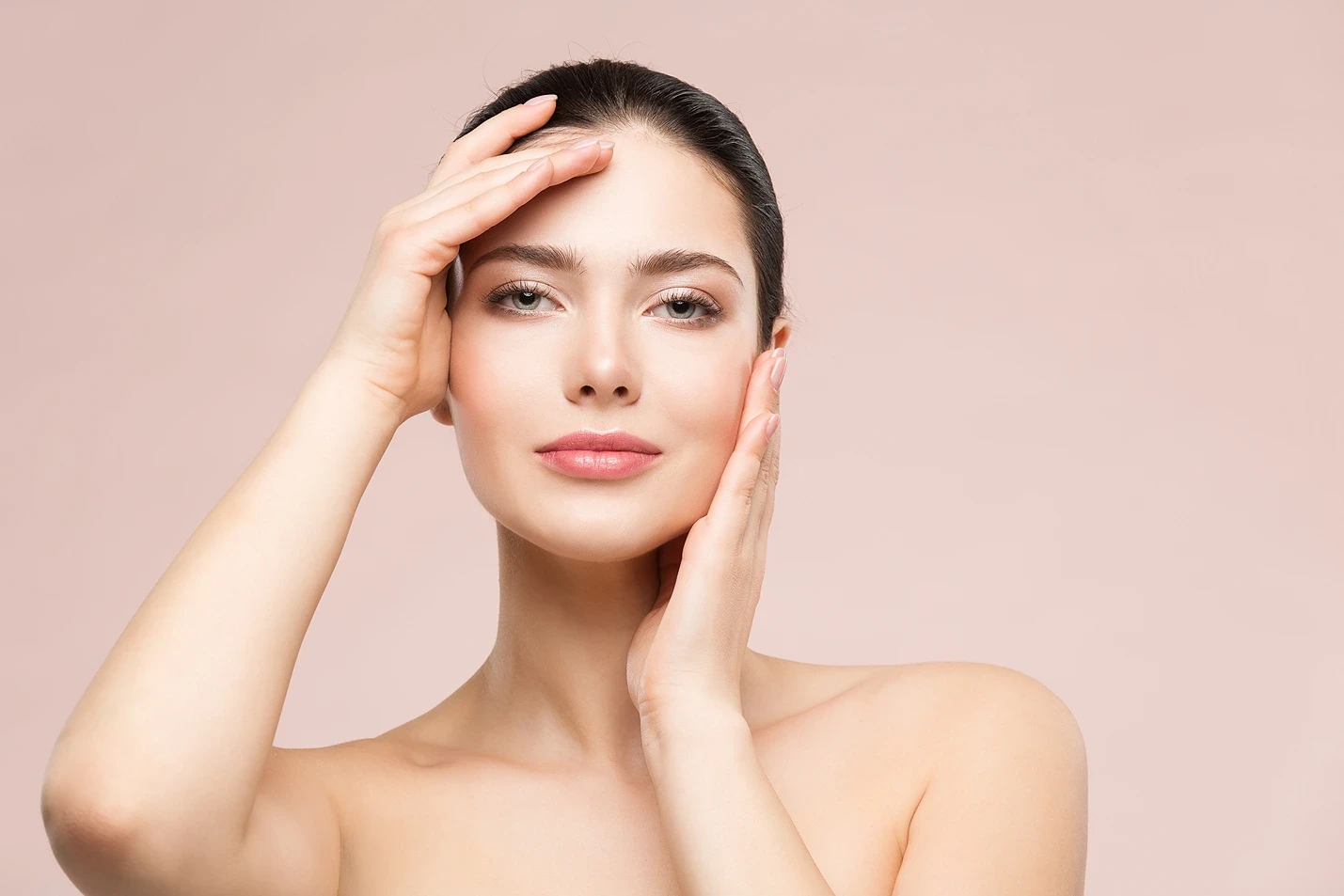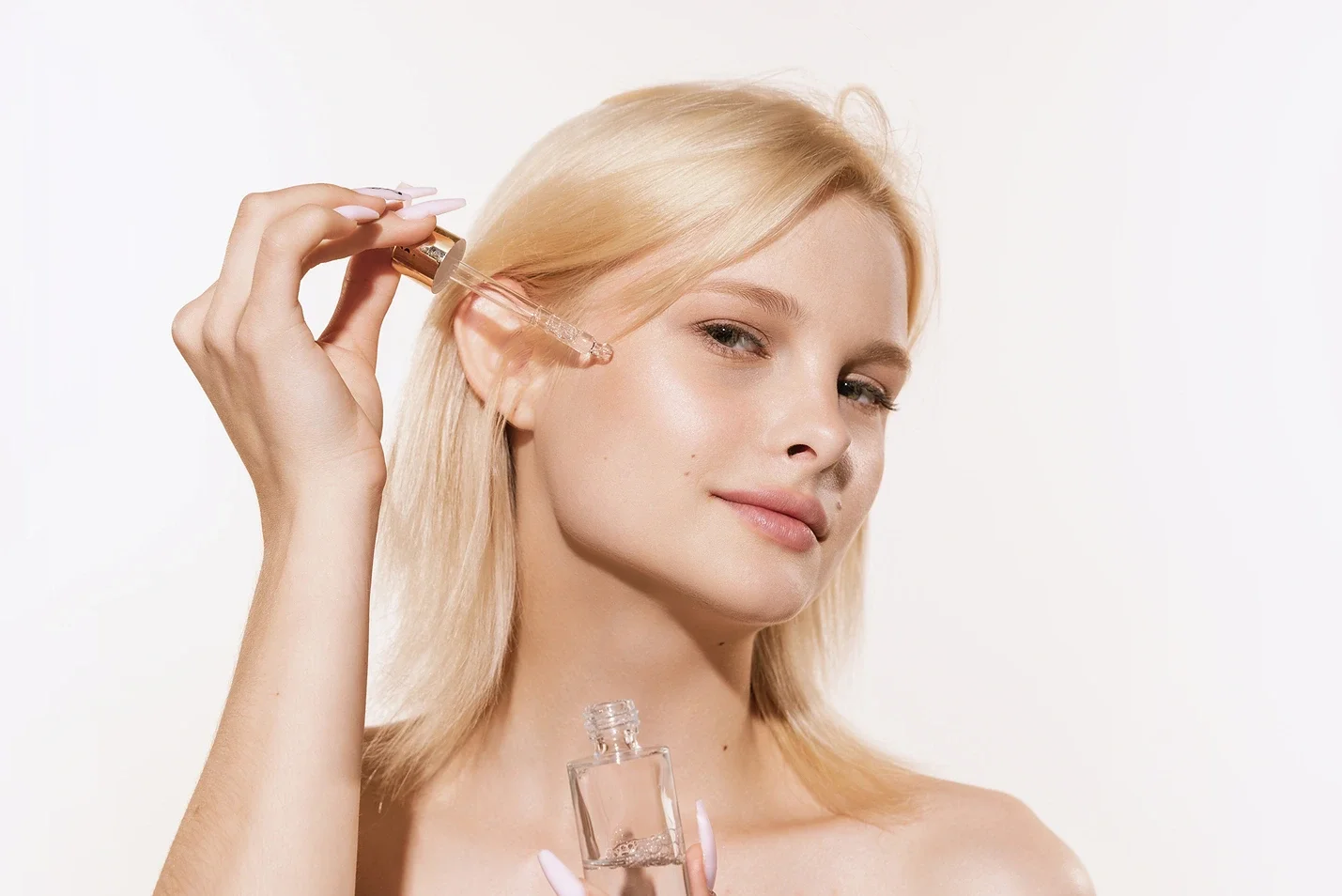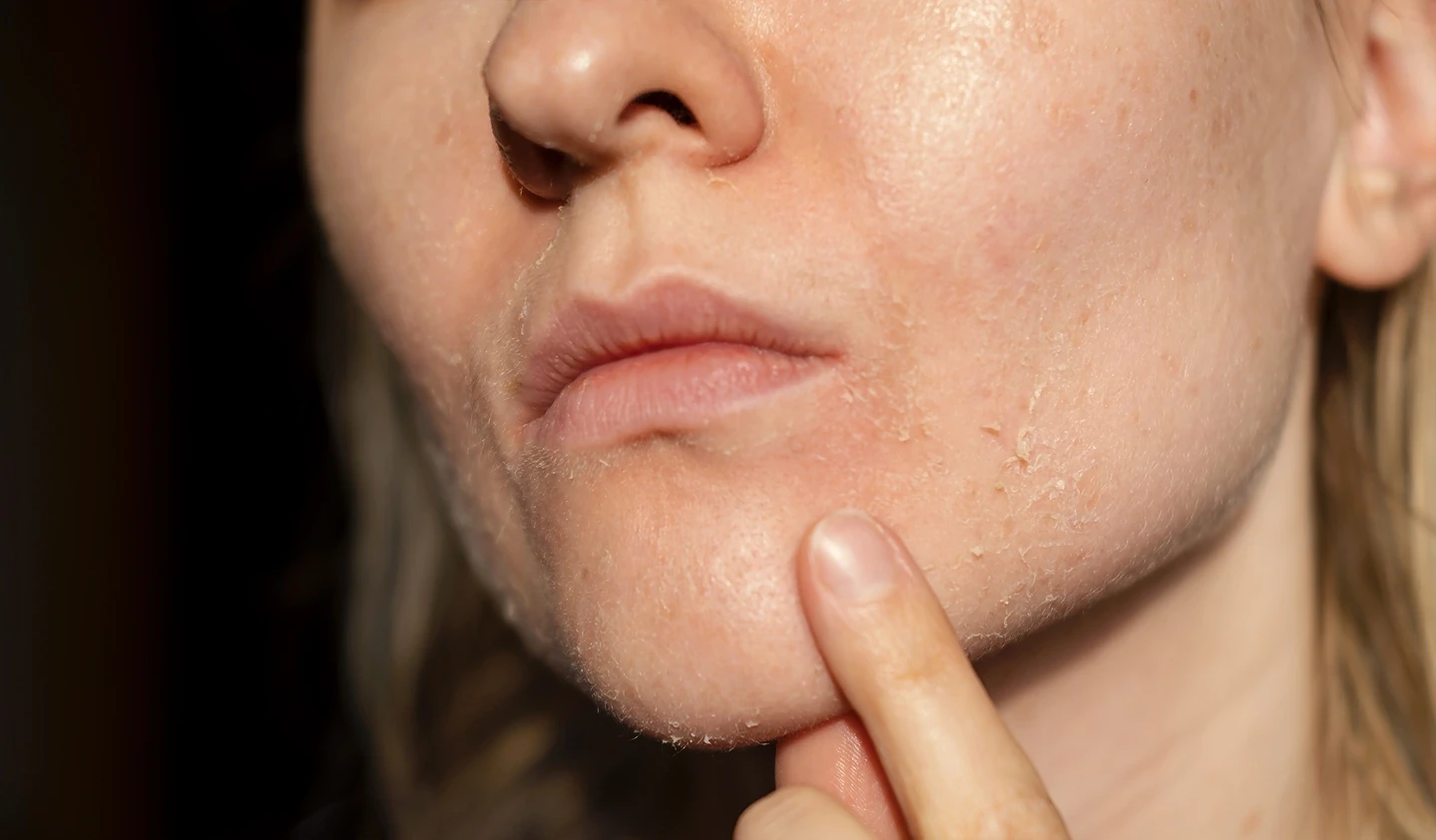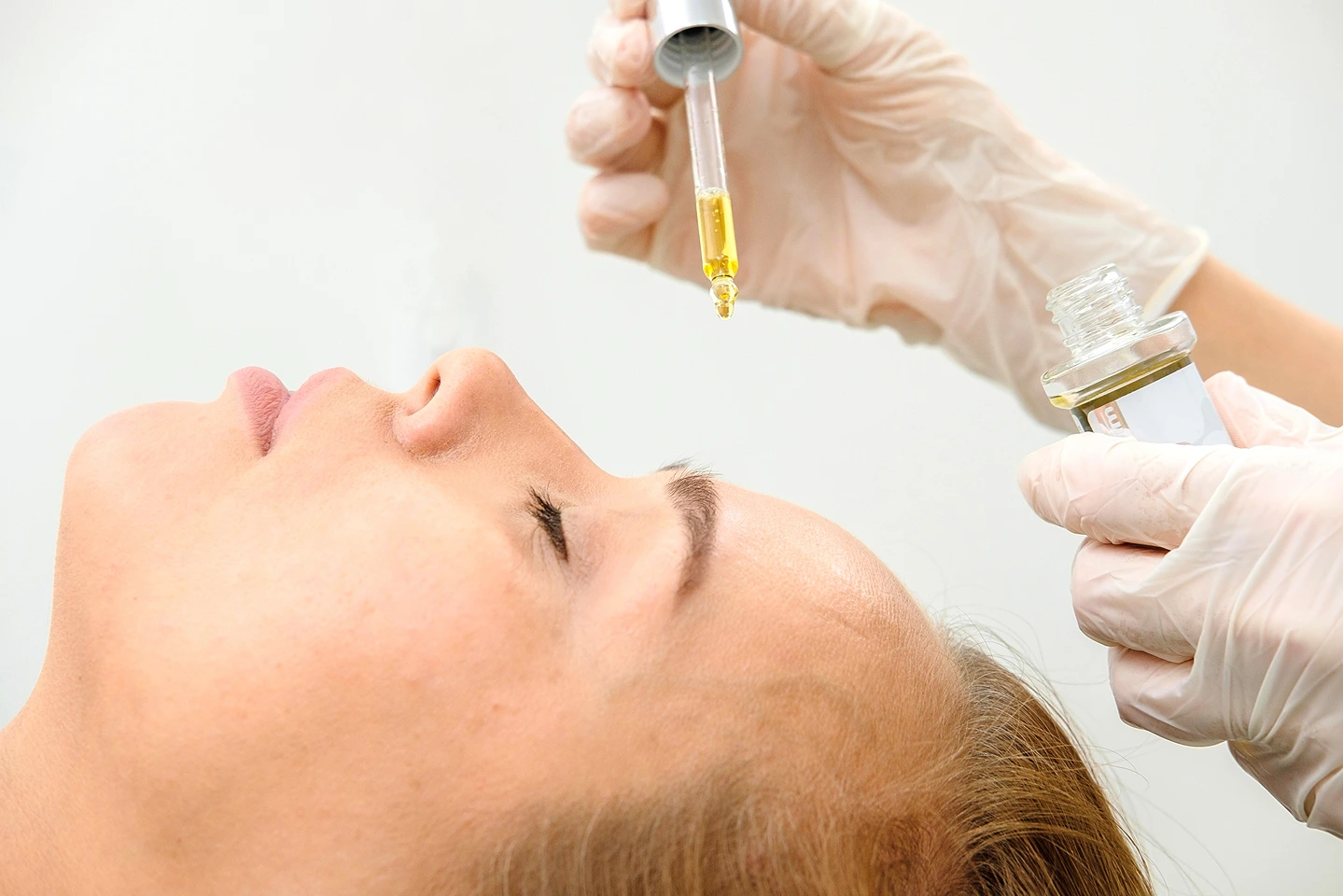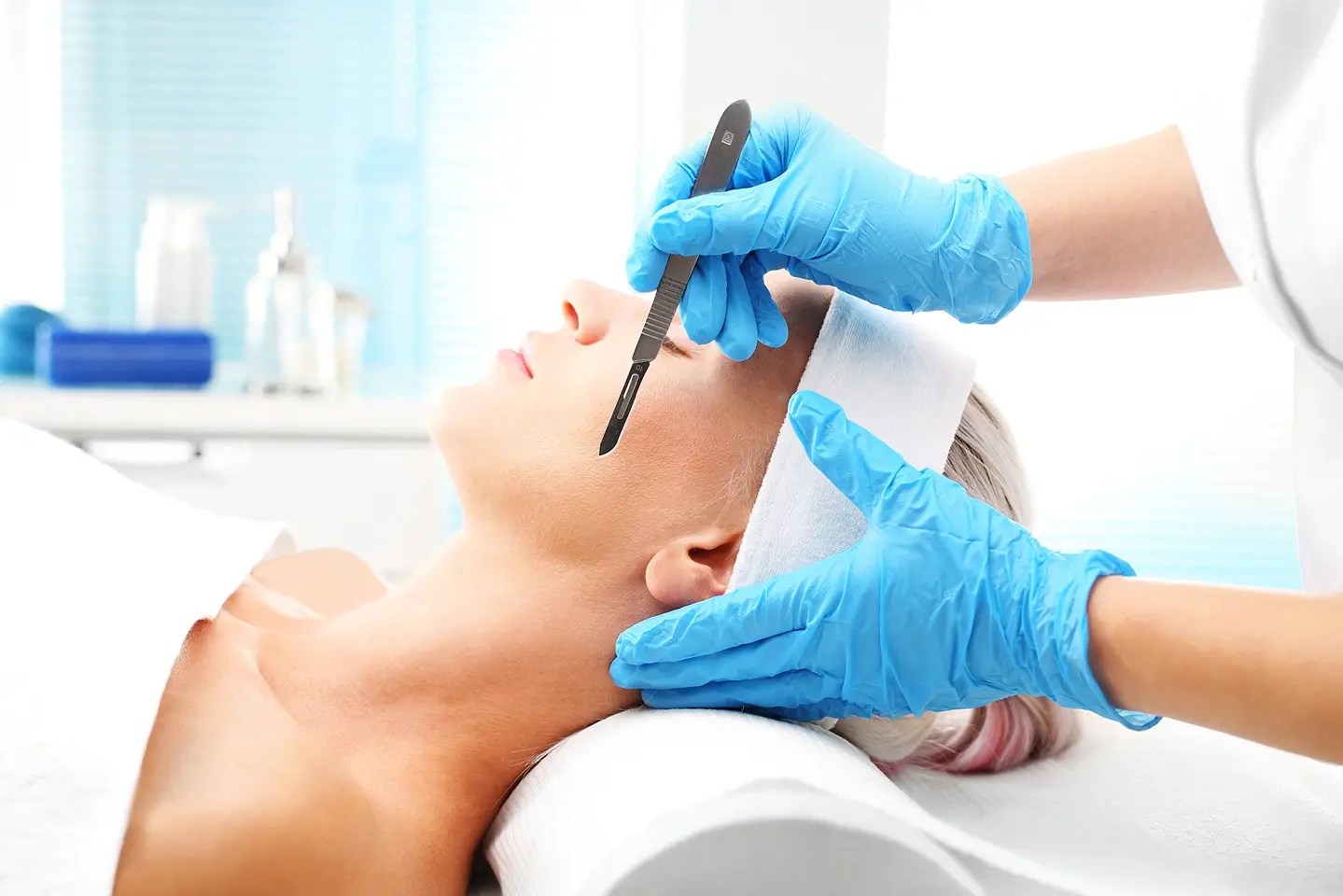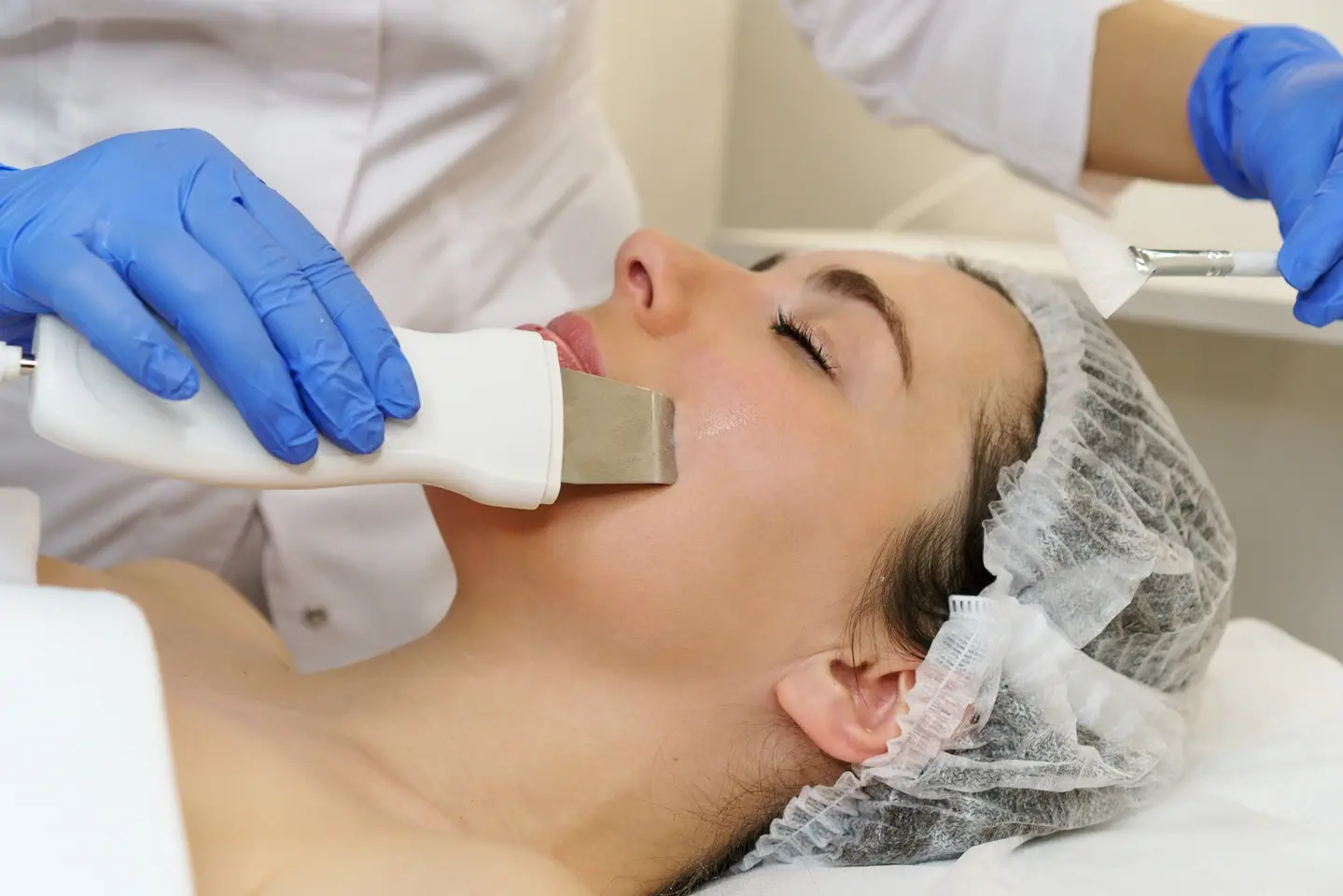
A Comprehensive Guide to This Popular Skincare Treatment
Dermaplaning typically doesn’t hurt; most people feel a gentle scraping sensation as the tool glides over the skin. It’s a safe procedure that helps remove dead skin cells and peach fuzz, leaving your face smooth and refreshed.
Imagine gliding a feather across your face—that’s the sensation most people experience during dermaplaning. While the thought of a surgical blade against your skin might sound intimidating, this increasingly popular skincare treatment has earned a reputation for being surprisingly gentle and comfortable.
Let’s explore everything you need to know about dermaplaning, from the science behind it to what you can really expect during treatment.
Understanding Dermaplaning: More Than Just a Fancy Shave
Dermaplaning represents the intersection of ancient beauty practices and modern skincare technology.
During this sophisticated exfoliation treatment, a skilled professional wields a sterile surgical scalpel at a precise 45-degree angle, delicately sweeping away dead skin cells and peach fuzz (technically known as vellus hair).
Unlike traditional facial shaving, this medical-grade procedure penetrates deeper, offering more comprehensive exfoliation while maintaining absolute precision.
Why Dermaplaning Doesn’t Hurt
Despite its clinical-sounding name, dermaplaning rarely causes discomfort. Here’s why:
The superficial nature of the treatment means it only affects the skin’s outermost layer, steering clear of pain-sensitive deeper tissues.
Most clients report experiencing nothing more than a light tickling sensation or gentle scratching feeling—similar to running a credit card across your skin. The blade’s ultra-fine edge (typically 0.03mm) allows for smooth, precise movements that don’t tug or pull at the skin.
Your Dermaplaning Session: What to Expect
Before the Treatment
Your dermaplaning experience begins with a thorough consultation. Your skincare professional will:
- Evaluate your skin type and concerns
- Review your medical history
- Discuss your skincare routine
- Address any specific questions or concerns
During the Procedure
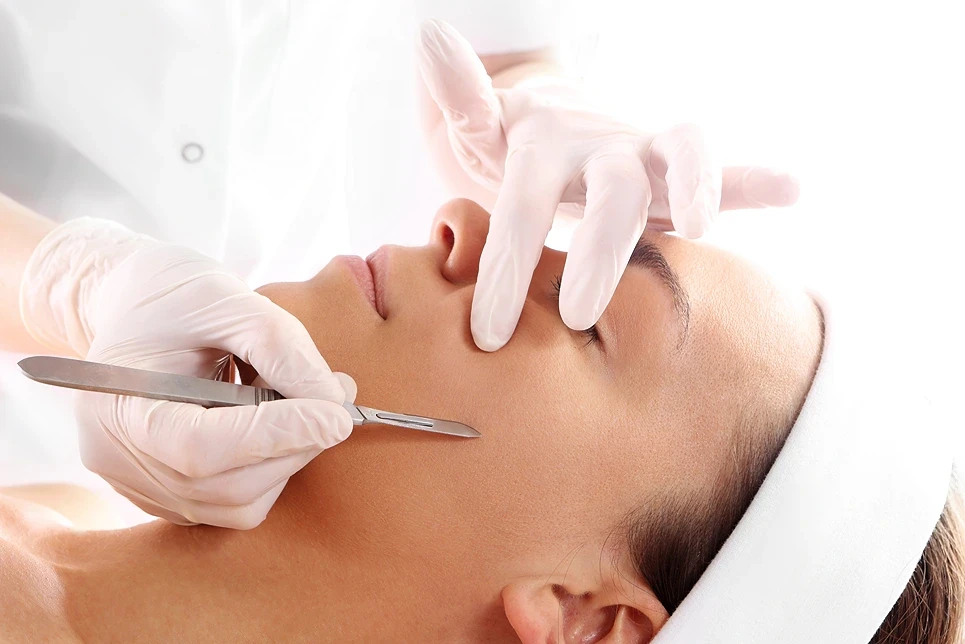
The 30-45 minute treatment unfolds in several carefully orchestrated steps:
- Deep Cleansing: Your skin undergoes thorough cleansing to remove all traces of makeup, oil, and surface debris.
- Skin Analysis: Your practitioner examines your skin under bright light to identify areas requiring special attention.
- The Main Event: Using precise, feather-light strokes, your provider systematically works across your face, paying careful attention to contours and varying pressure as needed.
- Final Touch: The treatment typically concludes with the application of soothing serums and protective moisturizers.
Many clients find themselves so relaxed during the procedure that they drift into a light doze—a testament to its gentle nature.
The Transformation: Immediate and Long-term Benefits
Dermaplaning’s popularity stems from its impressive array of benefits, both immediate and cumulative:
Instant Results
- Glass-smooth skin texture
- Noticeably brighter complexion
- Dramatically improved makeup application
- Reduced appearance of fine lines
Long-term Advantages
- Enhanced product absorption
- More even skin tone
- Reduced appearance of old acne scars
- Diminished visibility of fine lines and wrinkles
- Regulated skin cell turnover
Dermaplaning Recovery Process
While dermaplaning requires minimal downtime, knowing what to expect during recovery helps optimize results:
First 24 Hours
Your skin may appear slightly pink and feel more sensitive than usual. Think of it as a mild sunburn sensation that typically subsides within a few hours.
Days 2-3
As your skin adjusts, you might notice:
- Increased smoothness
- Enhanced product absorption
- Slight dryness (easily managed with proper moisturization)
Beyond Week 1
The full benefits of your treatment continue to emerge as your skin completes its renewal cycle.
Essential Dermaplaning Aftercare Guidelines

Protecting your investment in dermaplaning requires diligent aftercare:
Immediate Aftercare
- Apply broad-spectrum SPF 30+ sunscreen religiously
- Avoid direct sun exposure for at least 48 hours
- Skip intense workouts for 24 hours
- Keep hands away from treated areas
Ongoing Care
- Maintain gentle cleansing routines
- Use recommended moisturizers
- Continue sun protection
- Avoid harsh exfoliants for one week
Who Should (and Shouldn’t) Try Dermaplaning?
Ideal Candidates
- Those with normal to dry skin
- People seeking non-invasive exfoliation
- Individuals preparing for special events
- Anyone looking to optimize their skincare routine
Who Should Skip It
- Those with active acne breakouts
- People with inflammatory skin conditions
- Individuals with highly sensitive skin
- Those with active skin infections
Debunking Common Myths
Let’s address some persistent misconceptions:
Myth 1: Hair Grows Back Thicker
Reality: Vellus hair maintains its original texture and color when it regrows. The blunt edge from cutting may initially feel different, but the hair itself remains unchanged.
Myth 2: It’s Just Like Shaving
Reality: Dermaplaning provides professional-grade exfoliation that goes far beyond what regular shaving can achieve, using medical-grade instruments and techniques.
Myth 3: Results Are Temporary
Reality: While hair regrowth is natural, the exfoliation benefits contribute to long-term skin health and appearance.
Making the Most of Your Treatment
To optimize your dermaplaning experience:
- Timing Matters
Schedule treatments every 4-6 weeks to maintain results without over-exfoliating. - Combination Treatments
Consider combining dermaplaning with other treatments like chemical peels or facials for enhanced results. - Seasonal Considerations
While safe year-round, extra sun protection is crucial during summer months.
Common Questions to Ask About Dermaplaning
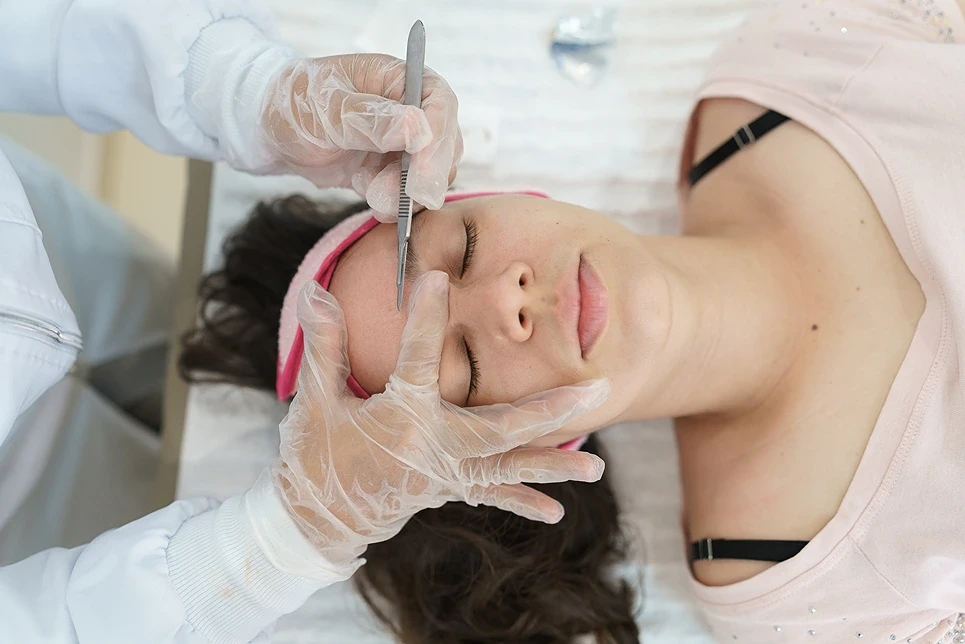
Should you dermaplane your nose?
Unlike the smoother planes of your cheeks and forehead, your nose presents unique contours that require special attention during dermaplaning. When performed by a skilled professional, the treatment can effectively remove dead skin cells and peach fuzz from this area, revealing fresher, more refined skin beneath. However, the nose’s distinct anatomy demands precise technique and extra care to prevent irritation or minor nicks.
When should you not get dermaplaning?
Several conditions serve as clear signals to postpone your dermaplaning treatment. Active acne breakouts, rosacea flare-ups, and any type of skin infection make dermaplaning inadvisable until complete healing occurs. Those taking blood-thinning medications should first consult their healthcare provider, as these medications can increase sensitivity and bleeding risk. Additionally, individuals experiencing severe sunburn or extremely sensitive skin should wait until their skin returns to normal before proceeding.
Is it better to dermaplane dry or with oil?
For optimal results, professional estheticians typically perform dermaplaning on clean, dry skin. This approach allows for maximum precision and control while ensuring the most effective exfoliation possible. While some practitioners experiment with oil-based techniques, the slick surface can compromise the treatment’s precision and potentially reduce its effectiveness. The dry method also enables better assessment of the skin’s response throughout the procedure.
Can I use hyaluronic acid after dermaplaning?
Following dermaplaning, your skin becomes exceptionally receptive to hydrating ingredients, making hyaluronic acid an ideal post-treatment choice. This naturally occurring substance excels at binding moisture to your newly exposed skin cells, promoting healing and maintaining optimal hydration levels. Apply it gently to your treated skin, allowing it to penetrate and soothe while maximizing the benefits of your dermaplaning session.
Is there a downside to dermaplaning?
While dermaplaning offers impressive benefits, understanding potential drawbacks ensures informed decision-making. Some clients may experience temporary redness or mild irritation, particularly those with sensitive skin. Though uncommon, improper technique can result in complications such as infection or minor nicks. Environmental factors may also affect your skin’s sensitivity post-treatment, making proper sun protection crucial. These considerations emphasize the importance of choosing a qualified professional rather than attempting at-home treatments.
Is it bad to remove peach fuzz from the face?
Contrary to common misconceptions, removing facial peach fuzz through professional dermaplaning proves both safe and beneficial for most skin types. The treatment not only creates a smoother surface but also enhances product absorption and improves makeup application. While the vellus hair will naturally regrow, it maintains its original texture and appearance, despite what popular myths might suggest. However, individual skin conditions and sensitivities should guide your decision to proceed with treatment.
The Bottom Line: Is Dermaplaning Right for You?
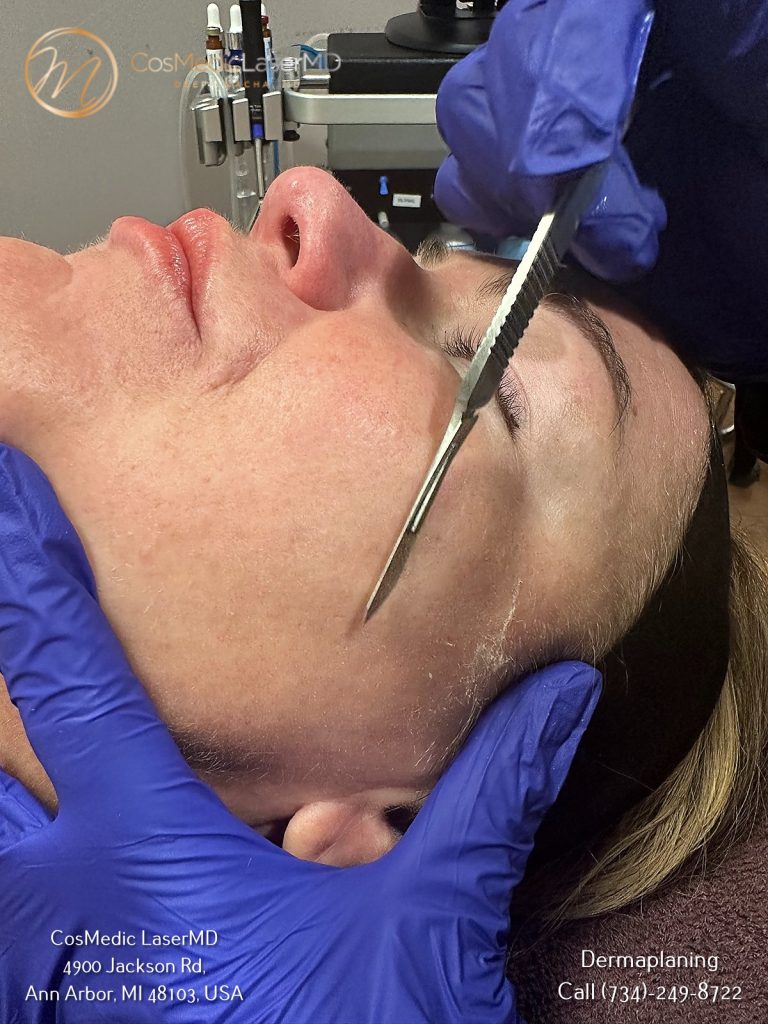
Dermaplaning offers a virtually painless path to smoother, brighter skin. While the thought of a blade near your face might seem daunting, the procedure’s track record for safety and comfort speaks for itself. With proper professional care and attention to aftercare, dermaplaning can become a valuable addition to your skincare routine.
Remember: The key to successful dermaplaning lies in choosing a qualified provider and following proper aftercare protocols. When done correctly, this treatment can transform your skincare routine and boost your confidence with minimal discomfort and impressive results.

